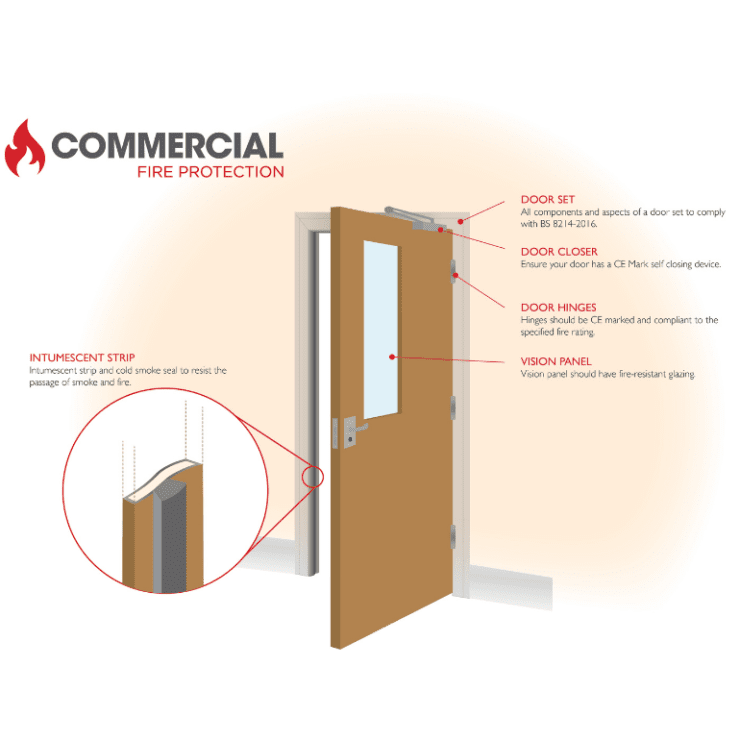Fire doors are a critical ingredient of an effective and legally compliant passive fire protection (PFP) strategy in commercial buildings. They help stop or at least delay the spread of fire through occupancy areas and escape routes.
Fire doors are either Wood, Steel or Glass and the ratings determine how long the door can withstand fire –FD30 (30 minutes), FD60 (60 minutes), FD90 (90 minutes), and FD120 (120 minutes).
A door leaf is one of the main components in a fire door set, but the structures, fittings, and furniture associated with the door also determine the door’s effectiveness in a fire situation.
If any one of these fails, the integrity of the entire fire door could be compromised.
Here’s what you need to look out for:
All components must work together for Fire Doors
Seals, ironmongery, signage, glazing, and framing all have their part to play in ensuring effective fire door performance and, indeed, compliance.




